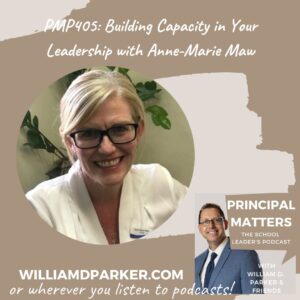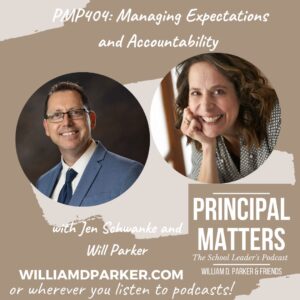Advocacy is one of those principal responsibilities that can be both encouraging and discouraging at the same time.

On the one hand, principals resist advocacy because we want to focus on events in school. On the other hand, when you don’t actively advocate for schools, you often suffer the consequences of decisions made by others who don’t always understand what is in the best interest of students.
The National Association of Secondary Principals is an umbrella-organization for Student Council and National Honor Society. At this year’s annual NASSP Ignite conference, I began thinking about the idea of how principals could better connect these student leaders with school advocacy. So when I returned home, I decided to invite student leader volunteers to my next visit to our state capitol. On Tuesday, March 22, 2016, one of my teachers and three STUCO leaders came with me to Oklahoma City to visit elected officials.
Lawmakers don’t always have easy jobs–especially during economic downturns. At the same time, they need good information, and hearing from students first-hand is a great way for them to connect their decisions to the faces in our schools.
Before we made our first visit together, I met with our student council ahead of time. I explained the current issues and asked them to choose at least three students who could go with me to the capitol. I wanted a small group for face-to-face meetings because it’s easier to have meaningful conversations with smaller numbers.
Once we were there, I tried to keep these 5 ideas in mind. If you’re thinking of increasing your student engagement in advocacy, consider these takeaways:
5 Tips on Advocacy with Students
1. Understand the issues, but keep it simple.
We spent our first hour of the morning meeting with other leaders at our association building to receive a summary of the latest bills affecting education. Afterwards, I asked my students to focus on just two of the bills for our visit. We chose not to discuss every issue but just two: in this case, one we felt was good for schools, and one we felt was bad for schools.
2. Be friendly, and say thank you.
Legislative sessions are busy times for lawmakers. If you are aware of something good they have done for schools, begin by telling them thanks. Building a positive rapport makes it a lot easier when you may have topics to discuss may include differences of opinion.
3. Tell stories.
Storytelling is a powerful way to communicate. One of my other students, Jacey (fourth from left in photo above), talked about how unhelpful she found our seven state required end-of-instruction exams. One of the bills being discussed would place many testing decisions back with the districts, so this was a good example to share in that discussion.
Another student, Lily, (third from left in photo above), is a senior at SHS. When we met with officials, she told this story and gave me permission to share it:
“A few weeks ago, I was attending a leadership STUCO training where we had a motivational speaker talk to us. During his talk, my teacher, Ms. Franklin turned to me and said, ‘Lily, that could be you someday.’ I was so inspired by what she said and thought, ‘Yes, I could do that someday!’ The next day, Mr. Parker visited our class to ask if we would be interested in visiting the capitol.”
“That night when I came home, I told my mom that I was upset. Why should teachers–like Ms. Franklin who had so inspired me–have to worry about their jobs and salaries? I told her I was choosing not to attend our next STUCO district meeting so I could use that activity absence to go the capitol instead. I want others to know how important teachers are to students and how much they need to be supported!”
When Lily told that story throughout the day, it was so encouraging to see the light come on in the eyes of those listening as a student–a real-life example of one affected by state policies and mandates–asking why teachers are not receiving more support.
4. Take photos and share via social media.
Politicians are in the business of public-relations. Give them the courtesy of sharing-out your visits with them. But also take advantage of the social-media coverage to publicize issues. For instance, when we posted a Twitter photo of our visit, our senior student, Lily, had a lot of follow-up with other students asking questions. These students are future voters too.
5. Follow-up with thank you’s and continue conversations.
Visits with elected officials should be part of an ongoing relationship. As much as lawmakers need to hear from the public, they especially need to hear from their own constituents. After visiting, follow-up with a thanks–whether it’s written, email, or via Twitter. Then schedule a time to reach out again soon. Inviting them to visit your school or speak to student groups is also a great way to maintain that connection.
Conclusion
Advocating with students is the best of both worlds: You are able to practice civic responsibility and model lessons for students at the same time. How thrilling it was to see students speaking out for their own education experience, asking why questions, and wanting to know what steps are being taken to secure support for their futures.
Now It’s Your Turn
If you haven’t already, think about you can involve your students in advocacy for their schools. What are some other suggestions you have for increasing student participation in public policy or advocacy? If you’ve had other moments with student advocacy, I’d love to hear yours, so share them with the rest of us!
Principal Matters Podcast
Check out audio versions of my posts at iTunes. Rate PMP at iTunes; when you do, it makes it more visible to others!
Sign-Up For Free Updates and Ebook
When you enter your email address below, you will automatically receive my newest posts and a free Ebook, 8 Hats: Essential Roles for School Leaders. Let’s keep learning together!
Subscribe for free weekly updates and receive free e-book!
(function($) {window.fnames = new Array(); window.ftypes = new Array();fnames[0]=’EMAIL’;ftypes[0]=’email’;fnames[1]=’FNAME’;ftypes[1]=’text’;fnames[2]=’LNAME’;ftypes[2]=’text’;}(jQuery));var $mcj = jQuery.noConflict(true);
Principal Matters–The Book!

School leaders are very busy, so each of the twenty-four chapters is designed as a quick-read and followed with take-action questions for follow-up or reflection. If you want practical ideas on understanding your purpose, managing school teams, dealing with challenges, and leading with courage, action, motivation, and teamwork, go HERE to pick up a copy for you or your team.


